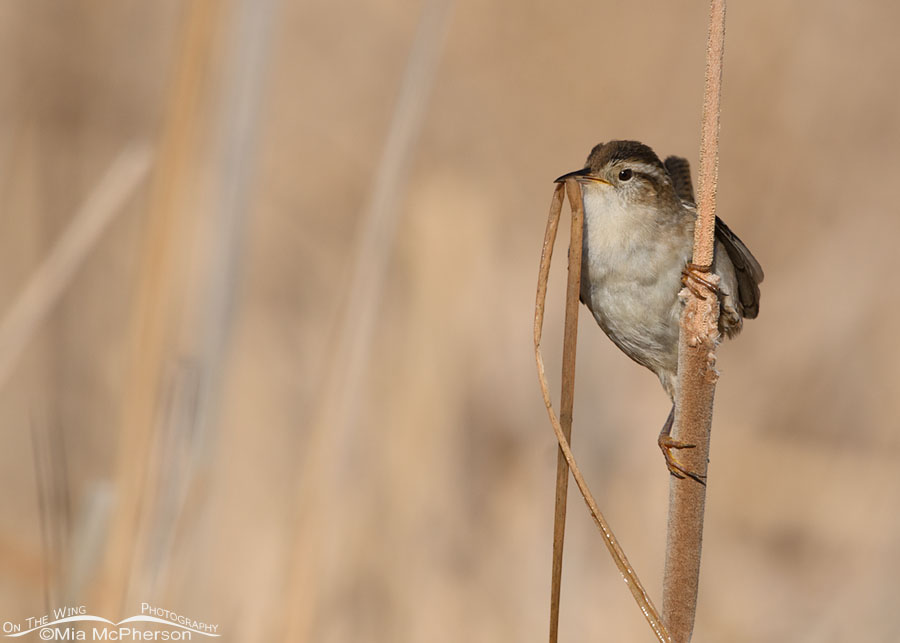 Male Marsh Wren with nest material – Nikon D500, f7.1, 1/3200, ISO 400, Nikkor 500mm VR with 1.4x TC, natural light
Male Marsh Wren with nest material – Nikon D500, f7.1, 1/3200, ISO 400, Nikkor 500mm VR with 1.4x TC, natural light
On my last visit to Bear River Migratory Bird Refuge I heard the unmistakable song of a Marsh Wren singing and throughout the morning I heard more of their songs. I was thrilled because during the winter these wrens aren’t nearly as vocal as they are during the spring and summer.
I often see local people say “the Marsh Wrens are back” on social media. These tiny birds are challenging to locate when they aren’t singing but they are year round residents in northern Utah. They are simply harder to locate and see during the winter.
In March the Marsh Wrens start to sing, find mates, and begin the process of building nests. In my opinion the best place in my area to observe and photograph Marsh Wrens building nests and during the nesting season is Bear River MBR from inside a vehicle from the auto tour route.
I use a vehicle as a mobile blind so there is less disturbance for the wrens. The comfort, safety, and well being of my subjects is always more important to me than the photos, especially during the nesting season.
At least once a year I post about ethics on photographing nesting birds so before the season really gets going here is some important information on the ethics of being near chicks and nesting birds:
- Do not approach too closely;
- If the birds show any sign of distress, back away;
- Don’t trim leaves, twigs or branches to get a clearer shot, you may inadvertently attract predators or cause the eggs/chicks to over heat;
- Follow local, state, and federal guidelines concerning nesting birds;
- Don’t harass the birds to get an action shot;
- Don’t stay a long time with nesting birds or chicks it disrupts their normal behavior;
- Always put the safety and comfort of the birds first.
For more information on the ethics of photographing nesting birds or chicks check out the Principles of Birding Ethics published by the American Birding Association.
I am very much looking forward to hearing more Marsh Wrens singing and watching and photographing them during this breeding season.
Life is good.
Mia
Click here to view more of my Marsh Wren photos plus facts and information about this species. The Marsh Wren photo above was taken at the refuge in March of 2018.


Love this shot — what a busy nest-builder! And thank you for your high ethics!
Thank you for your ethics.
Nice reminder that I will be hearing our Marsh Wrens in April. Can’t wait. I love their vocals.
Love those early, often subtle signs of Spring! Great capture of this little bird with nesting material Mia. Thank you for your reminder of birding ethics, too. Our feathered friends and neighbors face many hardships and don’t need more from us. I always look forward to your daily posts with stellar photographs and very informative descriptions. Thanks so much, Mia!😊